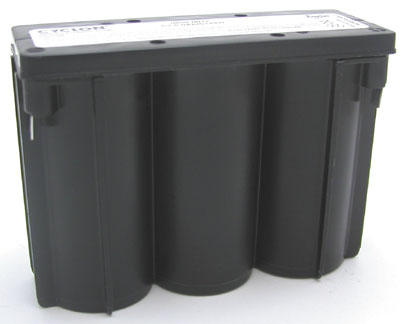Evergreen
September 3, 2011 at 10:19 PM by Dr. Drang
The battery in one of the emergency lights in our office died a couple of weeks ago. We have five sets of emergency lights (those are the small lights that go on when the power goes out so you can see your way to an exit), and none of the batteries have been changed in the ten-plus years we’ve been in our current building, so we decided to replace them all. When we were done, we had five little lead acid batteries that needed to be recycled.
I packed them up in a box and took them to a local Batteries Plus store. Feeling a little guilty about bringing things to a store for recycling without buying anything—especially a store I almost never go to—I decided to buy a couple of button batteries for my car’s smart key. These are CR 1632 batteries, which aren’t carried by Walgreens or Target or Costco. The current batteries in my smart keys were about two years old, and I know they don’t last too much longer than that.
All of which is a roundabout—and very SEO-unfriendly—way of introducing a post about my most successful blog article: this one about how to change the battery in a Camry smart key.
I can’t say it’s gotten the most traffic of all my posts, but it’s been the most consistent. Day in, day out, it keeps collecting pageviews. Here’s its Google Analytics report for this summer, two years after I wrote it:
Forty pageviews a day, rain or shine.
Virtually every visitor gets there via Google, where it’s currently the top hit for “camry smart key battery.” I’m sure that part of the reason it’s ranked so high is the (unwittingly) SEO-friendly title I gave it: “Camry smart key battery replacement.” But I like to think that its ranking is due mostly to its childishly clear instructions and photos. When you’re taking a trip into the unknown, it’s nice to have a detailed map and someone holding your hand.
Interestingly, some of the pageviews come from this eHow article, which is nothing more than a quick, slightly inaccurate1 rewrite of my post. eHow is one of those content farms that were getting a lot attention earlier this year when Google got sick of them cluttering up its search results. The author, Shannon Johnson, was probably paid about $5 to research and write her article, which, when I think about it, was more than I got paid, and I’m sure I spent a lot more time on it than she did.
I, of course, get paid in the adulation of my readers.
Ms. Johnson referred to the site as “Lean Crew,” which was a bit disconcerting. I guess I deserve that; “And now it’s all this” is kind of a weird title and not easy to abbreviate. At least she was honest enough to link to my page as her source.
I do have another evergreen post: it’s this one about LaTeX figure captions. Here’s its Google Analytics report for the past three months:
I love its periodicity. No one wants to write LaTeX on the weekends.2 In contrast, your smart key battery could run low any day of the week, and when it does you need to get it replaced. I’m here for you.
-
The eHow article talks about using the car’s “regular key” to pry open the smart key, when the whole point of the smart key is that you don’t have a regular key. ↩
-
It may look like the low points are wandering through the week, but that’s because the time axis tic marks are eight days apart instead of seven. I realize that Google’s charts are—and have to be—algorithmically generated, but you’d think whoever wrote the algorithm would know that eight-day intervals are stupid and confusing. ↩




